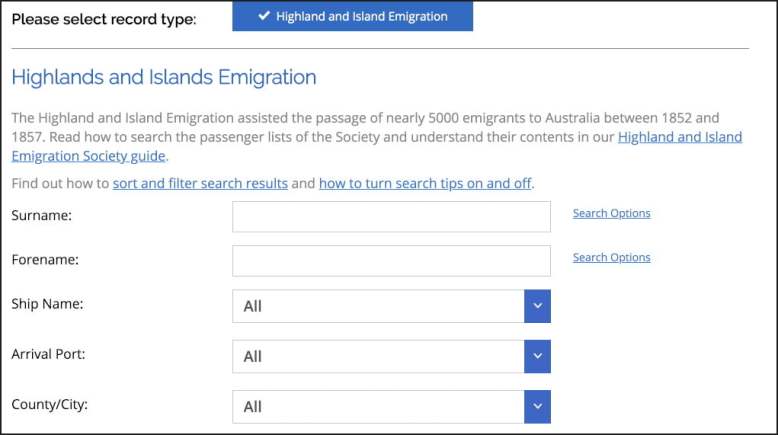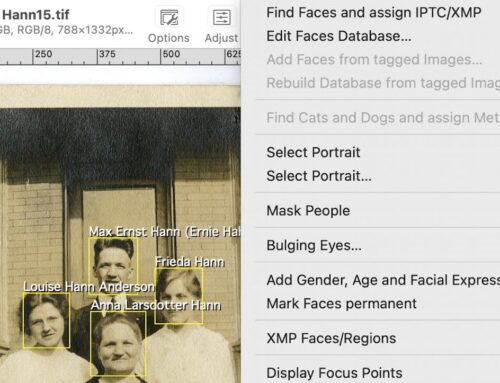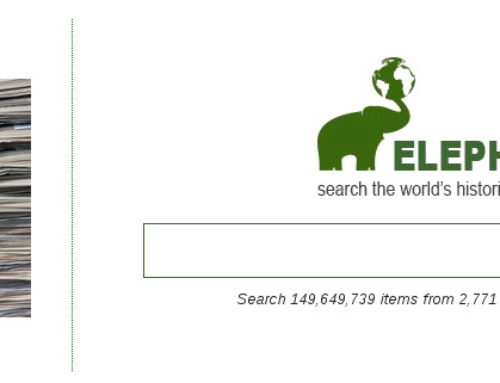Do you have ancestors who emigrated from Scotland to Australia in the 1850s? There’s a new free record collection for that!
Best of all, these records form a new category at ScotlandsPeople. Let’s hope their Poor Relief and Migration Records section soon includes other records generated by Scottish Poor Laws.
What’s New for Ancestors from Scotland to Australia in the 1850s?
The Highland and Island Emigration Society (HaIES) collection includes passenger lists for almost 5,000 people, who went from Scotland to Australia in the 1850s. (See sample record above.) Scottish emigrants booked passage with HaIES assistance from British ports to Australia between 1852-1857. The Society’s archive is located in National Records of Scotland.
Origin of the Highland and Island Emigration Society
The HaIES promoted and assisted emigration as a solution to the Highland Potato Famine. The Society’s work caused controversy. Praised for humanitarian relief at the time, the group was then and is still criticized. Did this group help rich landlords displace poor tenants in the Highland Clearances? Wikipedia’s excellent overview of this Society notes:
Despite having the appearance of an independent philanthropic organisation, the Society has been labelled a quasi-governmental organisation by historian Tom Devine. Evidence cited to support this view include the close involvement of senior civil servants in the Society, the Emigration Advances Act of 1851 which provided loans to landlords to pay their share of emigration costs and all overseas mail from the Society using the Treasury’s mail facilities. The existence of the Society allowed a course of action that would have cost more as a government operation and went against the ruling party’s political ideology.
What Do These Records Reveal?
 Find full names in family groups; plus ages, locations and estates; sailing dates; and ship names in these records.
Find full names in family groups; plus ages, locations and estates; sailing dates; and ship names in these records.
Of this collection, ScotlandsPeople notes, “[This] all-new database supersedes the transcript [formerly] available through the Scottish Archive Network. The [emigrants’] journeys to a better life were often dangerous and sometimes fatal. Among the thousands who left Scotland were the McKinnon family from Snizort on Skye and the McQueen family from St Kilda.”
Again, Wikipedia:
Skye was the area selected for the Society’s first operations, with Australia as the ultimate destination. Australia was chosen because the Highlanders’ experience as shepherds and cattle drovers would be valued there. By the time the Society closed, Skye was the origin of 59% of all its emigrants (59% = 2818 people). The next commonest starting points were Harris and a combined total for Mull and Iona – each providing 6% of the overall number.
How Were Emigrants Selected?
Search the Highland and Island Emigration Society Records
Creating an account at ScotlandsPeople is free. However, you may need to link a credit card for those records costing credits. Happily, the HaIES records are free to search, view, and download at ScotlandsPeople. Click the image below to get started. Gur math a thèid leat in your search ancestors from Scotland to Australia in the 1850s.
More Help with Scottish Research
Join me this coming Saturday in St. Charles, Missouri, USA, at the National Genealogical Society 2019 meeting for my session on Finding Scottish Ancestors Online.
If circumstances prevent, my e-book Finding Scottish Ancestors Online, helps you search leading websites and lesser-known databases for Scottish research. Discover search strategies for parish records, civil registrations, marriages, wills, tax lists, property assessments, burial registers, and other records.
You’ll also find resources for Scottish place names and geographical location research, and discover supporting resources, including help with Scottish handwriting, clans and tartans, and tutorials to advance your skills with Scottish records.









Thanks Nancy for this comprehensive post. I have shared it in my Australian Circles.
Thanks, Jill. I was delighted to see these newly digitized records. I hope they’re the start of many more.